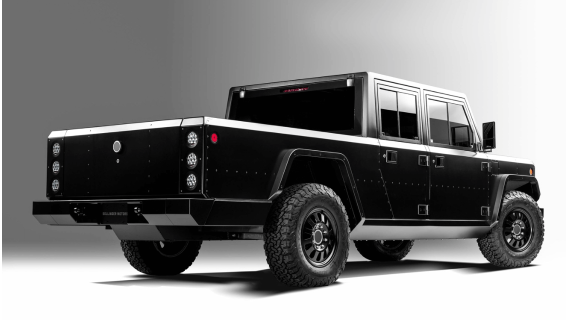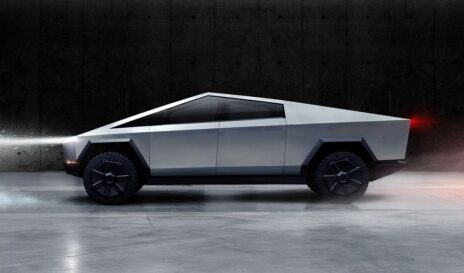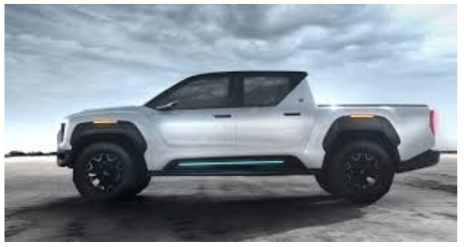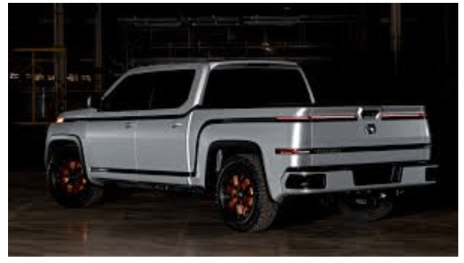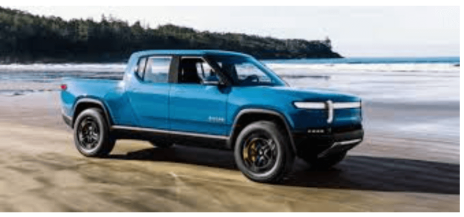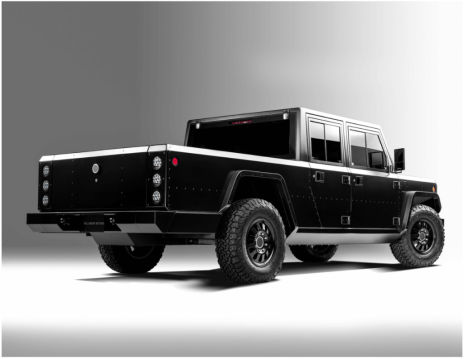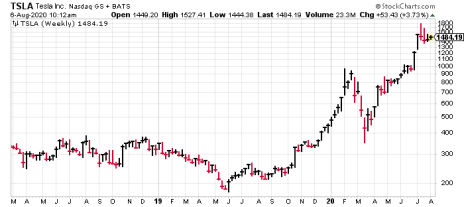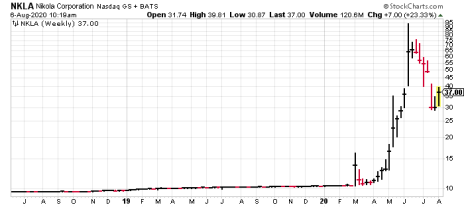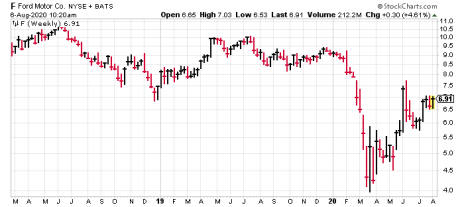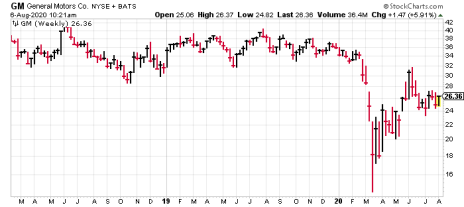A number of electric pickup trucks are suddenly in development. Here’s how to profit from this burgeoning market.
Until this year, an electric pickup truck was an idea most people would laugh at. But then the Tesla Cybertruck was unveiled last November—and now every car manufacturer in the U.S., both established and still-wet-behind-the-ears, is making plans to serve this potentially huge market. Everyone wants to make the best electric pickup truck.
After all, pickup trucks are the biggest and most profitable segment of the U.S. automobile market—and it would be folly to let Tesla (TSLA) run away with the electric truck segment without at least a fight.
So let’s take a look at the offerings and see how they stack up, starting with the truck that kicked off the race.
Tesla Cybertruck
Unveiled in November, the Tesla Cybertruck is not your father’s pickup truck, unless your father was Mad Max or John DeLorean. It’s got a stainless steel exoskeleton, a choice of one, two or three driving motors, and its price will start as low as $50,000. For that you’ll get range of at least 250 miles and a 0-60 mph time of 6.5 seconds, but if you go with the top-end model, you’ll get a range of 500 miles and a 0-60 mph time of 2.9 seconds.
[text_ad]
It’s definitely going into production, in the Gigafactory that will be built outside Austin, Texas, and sales won’t be a problem; Tesla already has 650,000 deposits from people who want to own a Cybertruck and relish the idea of driving a truck that looks futuristic.
Nikola Badger
Nikola (NKLA), which like Tesla is named for the brilliant Serbian-American inventor Nikola Tesla, is a truck company with no manufacturing plant and no prototypes of its vehicles, but it does have a good story—as Tesla did 10 years ago—so it’s possible that the company will be a big success.
In the long run, Nikola’s key idea is using hydrogen fuel cells in semi trucks to generate electricity to power motors. In the long run, I think it’s a good idea.
But in the short run, Nikola is taking advantage of the buzz generated by the Tesla Cybertruck to rush its own electric truck offering to market. It’s the Nikola Badger, a pickup truck that would run on batteries, and use 906 horsepower to achieve a 0-60 mph time of 2.9 seconds (just like Tesla’s most expensive Cybertruck).
Such a package would deliver range of 300 miles and cost about $60,000—not bad.
Nikola has received about 15,000 pre-orders for the Badger and expects to begin deliveries in the middle of 2022. But first they’ve got to line up some manufacturing partners. Unlike Tesla, which likes to do everything possible in-house, Nikola plans to outsource whatever it can. Optimistically, this will happen.
Lordstown Endurance
Unveiled in June, the all-electric Lordstown Motors Endurance is aimed squarely at the heart of the commercial pickup truck market. Base price is $52,000. Range is 250 miles. Top speed is limited to 80 mph. And 0-60 time is not mentioned. What is mentioned is that Total Cost of Ownership, thanks to lower costs of fuel and lower costs of maintenance, will be lower over time.
Lordstown Motors bought GM’s old Lordstown Assembly Plant in Ohio last year and is currently retrofitting it to produce the Endurance. Production is expected to start in late 2021. Pre-orders currently exceed 27,000, primarily from commercial fleet customers. This is definitely happening.
Rivian
Rivian is aiming for the adventurous outdoorsman, with an electric truck whose base model may cost less than $60,000 but whose loaded models (with range of 450 miles and 0-60 mph times of under 3 seconds) will easily top $100,000. The R1T was first shown at the LA auto show way back in November 2018 (a year before the Tesla Cybertruck), but it’s still not in production, though the old Mitsubishi factory in Normal Illinois will be the eventual factory location. But I’m not sure this is going to happen.
Bollinger
Another newbie, clearly going for the utilitarian look, is Bollinger, which aims to build the world’s most capable pickup truck, with no expense spared. The all-aluminum Bollinger B2 can hold 72 4x8 sheets of plywood and carry a 5,000 lb. payload, but range is only 200 miles. Prices start at an eye-popping $125,000. At that price, these can be hand-built, so I assume this will happen, though not at significant volumes.
Ford F-150 Electric
The name says enough. It’s coming in 2022. Interestingly, Ford has invested in Rivian.
Chevy BET Truck
Once again, the name says enough. It may show up in late 2021. Interestingly, GM has invested in Lordstown.
The Mindshare Winner
Admittedly, it’s early in the electric pickup truck race, but potential buyers are clearly interested, as evidenced by both pre-orders and internet activity.
In fact, one enterprising person at partcatalog.com, using geotagged data from Twitter, built a map showing the most anticipated electric truck in every state.
Tesla has California (where its factory is located) and Florida. Nikola and Rivian have definitely made an impression. But the expensive Bollinger leads in only four states and Lordstown leads in only one, Ohio, where it’s being built.
Ford and GM didn’t even make the list.
The Electric Pickup Truck Stocks
For investors, of course, the big question is which of these companies will be good investments.
Here’s Tesla, the most famous automotive stock of our time.
TSLA has had a great run this year and now it’s taking a well-earned breather, building a base centered on 1,500 a share. Readers of my Cabot Stock of the Week advisory have been on board since late 2011 and I’m still holding for the long-term—because after vehicles, Tesla is going to revolutionize the energy industry!
NKLA was hot in June after the Badger was announced, but the gains haven’t lasted. Optimistically, the stock might find support at 30. Pessimistically, it could easily fall to 20, where the 200-day moving average is—or even lower.
Lordstown is not yet public, though it expects to come public through a reverse merger late this year and trade under the symbol “RIDE”. Investors in Lordstown include Fidelity, BlackRock, Wellington, and others.
Rivian and Bollinger are not public.
And as for Ford (F) and General Motors (GM), value investors might well find something to like about them—in fact one Cabot value analyst likes GM here.
But both companies suspended their dividends earlier this year as the COVID shutdown both forced factory shutdowns and kept consumers from showrooms, and value stocks are simply not my style.
Going forward, therefore, I’m sticking with Tesla (TSLA), keeping an eye on Nikola (NKLA), and especially intrigued by the practical vision of Lordstown, which may begin trading later this year.
[author_ad]
